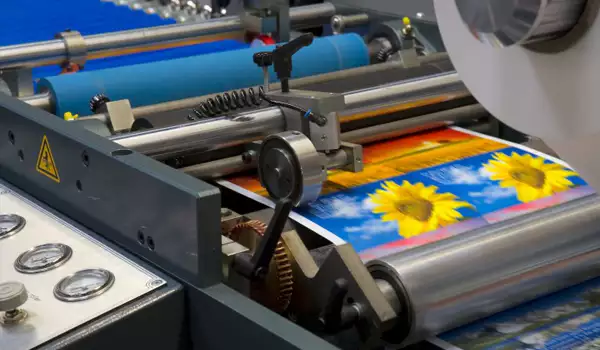How to perform a site survey for RTO in the printing industry?
مقدمة
A site survey is an essential step in implementing a regenerative thermal oxidizer (RTO) in the printing industry. It involves assessing various aspects of the site to ensure the successful installation and operation of the RTO system. This article will provide a comprehensive guide on how to perform a site survey for RTO in the printing industry.
1. Assessing the Site Requirements
– Evaluate the available space for the RTO system installation, considering its dimensions, accessibility, and safety requirements.
– Determine the power supply and voltage capacity needed for the RTO system to function efficiently.
– Consider any potential environmental regulations and permits required for the installation and operation of the RTO system.
2. Analyzing the Printing Processes
– Identify the types of printers and printing techniques used in the facility.
– Evaluate the ink and solvent types utilized in the printing processes.
– Determine the emission levels and pollutants generated during the printing operations.
3. Understanding the Emission Control Needs
– Assess the required destruction efficiency for volatile organic compounds (VOCs) and other air pollutants.
– Identify any specific emission control regulations or standards applicable to the printing industry.
– Consider the need for additional air pollution control devices to complement the RTO system.
4. Reviewing the Heat Recovery Potential
– Evaluate the potential for heat recovery from the printing processes.
– Analyze the heat demand within the facility and identify opportunities for utilizing the recovered heat.
– Assess the feasibility of integrating a heat recovery system with the RTO for increased energy efficiency.
5. Examining Maintenance and Monitoring Requirements
– Determine the accessibility for routine maintenance and inspection of the RTO system components.
– Identify the need for continuous emissions monitoring and data collection.
– Evaluate the availability of skilled personnel for system maintenance and troubleshooting.
6. Installing and Commissioning the RTO System
– Develop a detailed installation plan, considering equipment placement, ductwork, and electrical connections.
– Ensure proper integration of the RTO system with the existing printing facility infrastructure.
– Conduct thorough testing and optimization of the RTO system before final commissioning.
خاتمة
Performing a site survey is crucial for the successful implementation of an RTO system in the printing industry. By carefully assessing the site requirements, analyzing printing processes, understanding emission control needs, reviewing heat recovery potential, and examining maintenance and monitoring requirements, a well-designed and efficient RTO system can be installed. It is important to follow the proper installation and commissioning procedures to ensure optimal performance and compliance with environmental regulations.


Performing a Site Survey for RTO in the Printing Industry
Our company is a high-tech enterprise that specializes in the comprehensive treatment of volatile organic compounds (VOCs) and carbon reduction and energy-saving technology. We have four core technologies: thermal energy, combustion, sealing, and self-control. In addition, we have the ability to simulate temperature fields, air flow fields, and have the capability to test the properties of ceramic heat storage materials, molecular sieve adsorption materials, and high-temperature oxidation of VOCs.
We have an RTO technology R&D center and waste gas carbon reduction engineering technology center in Xi’an and a 30,000 square meter production base in Yangling. Our core technology team comes from the Sixth Academy of Aerospace Liquid Rocket Engine Research Institute (Aerospace Sixth Academy), and we currently have more than 360 employees, including more than 60 R&D technical backbones, including three research-level senior engineers, six senior engineers, and 47 thermodynamics PhDs.
Our core products are the rotating valve-type heat storage oxidation incinerator (RTO) and molecular sieve adsorption and concentration rotary wheel. Combined with our own environmental protection and thermal energy system engineering technical expertise, we can provide customers with comprehensive solutions for industrial waste gas treatment and carbon reduction and utilization of thermal energy under various working conditions.

الشهادات وبراءات الاختراع والتكريمات
Our company has obtained several certifications and qualifications, including intellectual property management system certification, quality management system certification, environmental management system certification, construction industry enterprise qualification, high-tech enterprise, rotating heat storage oxidation furnace turning valve patent, rotary heat storage incineration equipment patent, and disc-shaped molecular sieve rotary wheel patent.

اختيار معدات RTO المناسبة
Choosing the right RTO equipment depends on several factors:
- Determine the waste gas characteristics
- فهم اللوائح المحلية ومعايير الانبعاثات
- تقييم كفاءة الطاقة
- ضع في اعتبارك التشغيل والصيانة
- تحليل الميزانية والتكاليف
- Choose the right RTO type
- ضع في اعتبارك العوامل البيئية والسلامة
- Perform performance testing and verification
عملية الخدمة لدينا
Our service process includes the following steps:
- Initial consultation, on-site inspection, and demand analysis
- Solution design, simulation, and solution review
- الإنتاج المخصص ومراقبة الجودة واختبار المصنع
- خدمات التركيب والتشغيل والتدريب في الموقع
- الصيانة الدورية والدعم الفني وتوفير قطع الغيار
We are a one-stop solution provider with a professional team that provides customers with customized RTO solutions.
المؤلف: ميا
